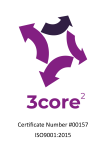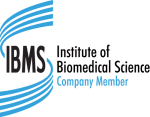55th Annual Meeting Society of Thrombosis and Haemostasis Research – [Anti-FVIII]
Aim: Haemophiliacs A patients treated with FVIII concentrates from human or recombinant origin may develop inhibitors, the most frequent complication leading to increased mortality. It then requires an adapted characterization and therapeutic management. A new anti-FVIII IgG ELISA was developed as a diagnostic help for the detection and quantitation of these inhibitors in patients’ plasma.
Method: Elisa strips is coated with highly purified recombinant FVIII (phospholipid free), identical to the one used for patients. A 1:100 dilution of the tested plasma is introduced into the well, followed by a 1 hour incubation at RT and a washing step. A goat anti h-IgG Ab coupled to peroxidase is then added, and reacts with the captured patients IgG, when present. After a new washing step, a peroxidase substrate (TMB) is used for revelation and the reaction stopped with H2SO4. The amount of color generated at 450nm is directly proportional to the inhibitors concentration present in the tested sample.
Results: A “humanized” chimera made of anti-VIII Ab coupled to (h)IgG was prepared to establish the calibration curve. This allows relative quantitation of inhibitors, when present, as high levels of inhibitors could correspond to the most severe cases. A negative control is also included and is a reference normal plasma. The kit was evaluated on normal plasmas. Normals, Haemophiliacs without or with inhibitors were tested and A450 was respectively
of 0.05 (SD 0.03), 0.06 (SD 0.04), and >1.0 . Results correlated with previously determined Bethesda units and another commercial Elisa for the same application, while presence of ACC antibodies does not interfere in the assay. The lower limit of quantitation was estimated at about 0.5 Bethesda Units.
Conclusion: This new assay could be proposed as an efficient and reliable standardized tool for managing patients in such critical states, for improved therapeutic follow up, and possibly for retrospective or prospective studies.
Development of an individual Anti-FVIII Inhibitors ELISA to improve haemophiliacs therapeutic follow up


